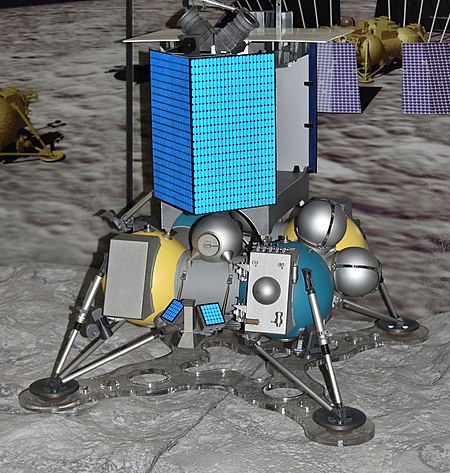After a gap of nearly five decades, Russia is poised to reclaim its position on the lunar stage with the upcoming launch of the Luna-25 spacecraft.
Russia is all set to launch its initial lunar landing craft on Friday, engaging in a competitive sprint with India toward the southern pole of the moon. The pole holds promise as a potential water source that could aid future human activities. The launch, occurring from the Vostochny Cosmodrome, located 3,450 miles east of Moscow, is scheduled just four weeks after India’s Chandrayan-3 lunar lander was set up. Assembling a Soyuz rocket for the launch of the Luna 25 Lander, The Russian space agency announced its preparation for Moscow’s inaugural Lunar Mission after 1976.

Chandrayaan-3 is scheduled to make its landing at the moon’s south pole on August 23rd as per ISRO officials.
The Russian space agency Roscosmos stated that its Luna-25 spacecraft is anticipated to travel to the moon over a span of five days. Following this, it will spend five to seven days orbiting the lunar surface before initiating its descent toward one of the three potential landing locations near the pole.
This schedule hints at the possibility of Luna-25 closely aligning or slightly surpassing its Indian counterpart’s landing on the moon.

Coexistence in Space
Roscomos assured that the separate landing plans of the two missions prevent any overlap, emphasizing, “There is ample room on the moon and there is no risk of interference or collision”.
Chandrayaan-3 is set to carry out experiments for a fortnight, whereas Luna-25’s mission spans a year.
Challenging topography poses landing difficulties, yet the moon’s south pole remains highly coveted due to the potential presence of substantial ice deposits. Scientists speculate that these ice reserves could serve as valuable resources for extracting fuel, oxygen, and potable drinking water.
Earlier in April, Japan’s Ispace (9348.T) faced failure in its attempt to achieve the maiden moon landing by a private space company.
Prospecting For Lunar Resources
Weighing 1.8 tons and equipped with 31 kg(68 pounds) of scientific tools, Luna-25 will deploy a scoop to collect rock samples from depths of up to 15 cm (6 inches). The goal is to assess whether frozen water, potentially supporting human life, exists beneath the surface.
Lev Zeleny, a space researcher at the Russian Academy of Sciences, remarked, “The moon is like Earth’s seventh continent; it’s almost our duty to explore and understand it.”
Originally scheduled for October 2021, the launch has been postponed for nearly two years. The European Space Agency’s intention to test its Pilot-D navigation camera through Luna-25 was abandoned after Russia’s involvement in Ukraine’s situation in February of the previous year.
Inhabitants of a village in Russia’s eastern region will be temporarily relocated from their homes at 7:30 a.m. on Friday. This precautionary measure arises from an exceptionally low “one in a million chance” that a rocket stage from Luna-25’s launch might land there. Alexei Maslov, speaking to Russian news outlet Business FM, shared that the 26 residents of Shakhtinsky will be taken to a safe viewing area to witness the launch, enjoy breakfast, and return within 3 and a half hours. Fishermen and hunters in the vicinity have also received advance notices.












